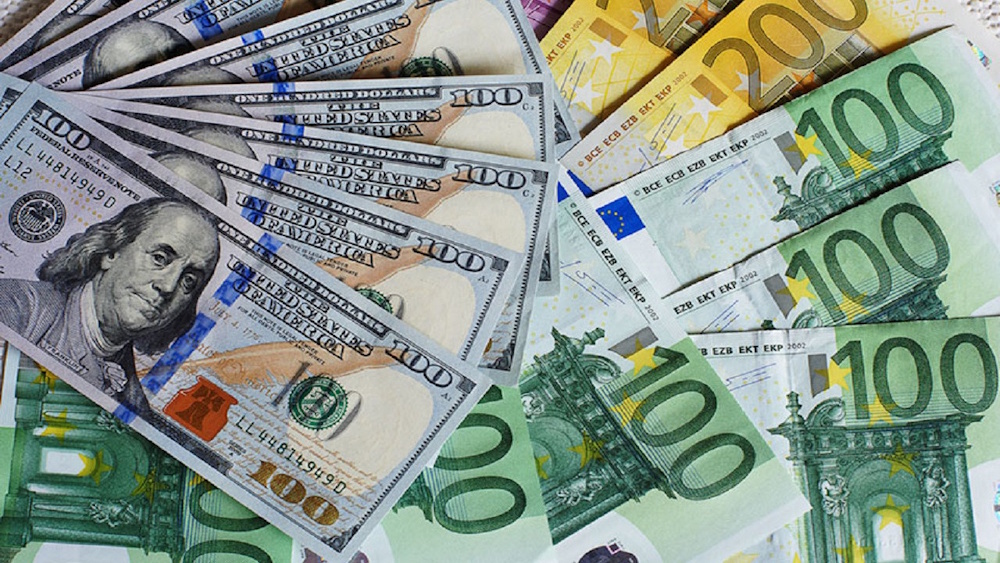The EUR/USD pair is presently at approximately 1.1620, showing a decrease of 0.35% for the day, amid rising volatility after the Federal Reserve’s 25-basis-point rate reduction and underwhelming economic indicators from the Eurozone. The Fed has lowered its benchmark range to 4.00%. However, Chair Jerome Powell’s caution that inflation progress “is not yet guaranteed” sparked a widespread rally in the U.S. dollar, propelling it to 99.21, marking its highest level since August. In the current context, the ECB’s cautious stance combined with stagnant Eurozone GDP figures has made the euro vulnerable, as market participants concentrate on the 1.1540–1.1560 range as the upcoming key support level. Even with the rate cut, Powell’s remarks suggested hesitance towards further easing, which tempered market enthusiasm. Market participants decreased the probability of a December cut to 70% from 90%, further enhancing the dollar’s strength. As a result, EUR/USD dropped below 1.1640, reversing earlier gains. The DXY saw an increase of nearly 0.6%, with U.S. Treasury yields holding steady around 4.18%, which continues to apply upward pressure on the dollar. The aggressive stance shifted sentiment notably, causing a pullback in risk assets and a drop in gold, which had difficulty holding its ground near $3,972.
Europe’s macroeconomic landscape offered no relief. Germany’s GDP held steady at 0.0%, narrowly escaping contraction, while the German CPI rose by 0.2% and Spanish inflation fell to 2.9%. The ECB’s choice to keep the deposit rate at 2.00% highlights the difficulties confronting an economy striving to recover its momentum. ECB President Christine Lagarde warned that inflation risks are still present, while highlighting that “growth conditions remain fragile.” The euro’s limited yield edge compared to the dollar continues to suppress demand, pushing EUR/USD down to its lowest levels since early October. From a technical perspective, EUR/USD is facing notable resistance near 1.1640, aligning with the 200-period EMA at 1.1642, which has constrained all recent efforts at recovery. The 50-period EMA at 1.1620 is currently serving as intraday resistance, while the RSI reading of 45 suggests a decrease in buying momentum. A confirmed break below 1.1580 would indicate 1.1545, the low from October. The Fibonacci retracement at 0.236 (1.1628) is significant — a close beneath this level could lead to heightened selling pressure towards the 1.15 mark. Conversely, a rise above 1.1659 might trigger short covering within the range of 1.1700–1.1770, corresponding with the 0.618 retracement of the October downtrend.
The meeting between Trump and Xi in South Korea gave a short-lived lift to global markets after the U.S. chose to cut tariffs on Chinese imports from 57% to 47%, and China decided to delay export controls for a year. EUR/USD saw a bounce back to 1.1635, then pulled back as monetary divergence overshadowed trade optimism. The event reduced geopolitical risk; however, it did not offset the macroeconomic challenges affecting the euro’s performance. Market participants are currently anticipating the Eurozone Core CPI, projected at 2.3%, along with U.S. Nonfarm Payrolls, which are expected to act as the next catalysts for volatility. The U.S. Dollar Index is currently trading in the range of 99.13–99.21, positioned above the 50-day EMA at 98.89 and the 200-day EMA at 98.71, indicating a strong bullish trend. The RSI around 59 suggests strong demand without entering overbought territory. A steady move past 99.21 could open the path to 99.47–99.78, reinforcing the bearish outlook for EUR/USD. As U.S. 10-year yields stabilize around 4.18%, it seems that the dollar’s support is based on structural factors instead of speculative influences. Recent CFTC data shows that euro net longs fell by 18% week-over-week, indicating a drop in confidence among major speculators. Hedge funds appear to be scaling back their involvement as they prepare for the upcoming inflation data and the upcoming ECB meeting. The ongoing decline in positioning suggests a possible challenge at 1.1540 if EUR/USD fails to bounce back to 1.1650.
The reduction in leverage also limits downside acceleration, suggesting that a short squeeze could happen in reaction to weaker U.S. data or dovish signals from the ECB. The GBP/USD pair is currently at 1.3200, staying near multi-month lows, while USD/JPY has climbed above 150.90, reflecting persistent strong demand for the dollar across the foreign exchange market. This highlights the story of differing global policies — a stringent Fed in contrast to a more reserved ECB and BoE. The euro’s struggle highlights the growing trend of dollar inflows, with traders favoring high-yield and dollar-denominated assets. The Euro Volatility Index has seen an 11% rise this week, reflecting increased hedging activity ahead of Friday’s data release. The 1.1620 zone remains the key area of attention for EUR/USD. Holding above this level could result in the pair stabilizing within the 1.1700–1.1770 range, while falling below it raises the risk of a notable drop towards 1.1540–1.1500. Macro catalysts — including inflation readings and U.S. payrolls — will determine if this support holds strong or weakens. The current mood leans negative; however, the existing oversold conditions suggest a possibility for a brief rebound, depending on whether the dollar’s rise can be stopped.

